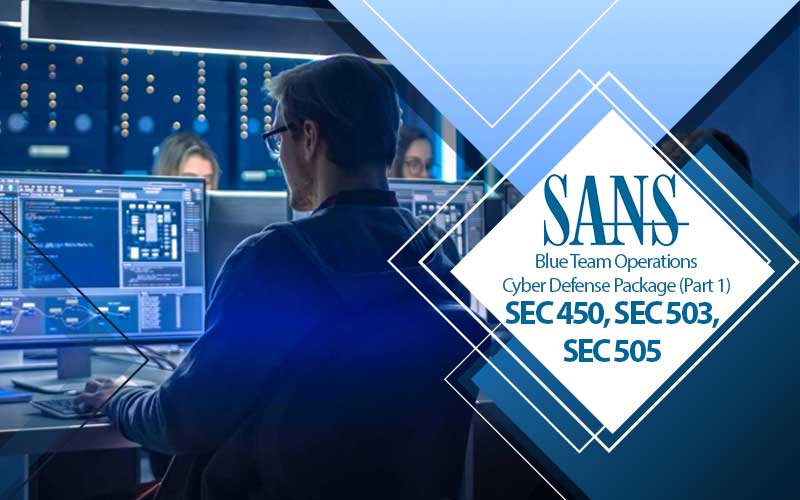
تمرکز دوره SANS Blue Team Operations ، برروی محافظت سازمان در مقابل حملات سایبری می باشد.هر راه حلی که باعث افزایش سطح امنیت دفاعی گردد ، مشمول Blue Team خواهد بود اما تاکید اصلی این دوره بر روی کشف و مقابله با حملات است.
تاکید سیاست امنیتی پیشگیرانه (preventive) بر روی جلوگیری ازنفوذ می باشد.در صورت عبور نفوذگر، کنترلهای امنیتی پیشگیرانه با شکست مواجه خواهند شد.در مقابل، تاکید مهارتهای موجود در Blue Team Ops برروی پیاده سازی تکنیکهای عملی و قابل اجرا در جهت تشخیص به موقع و مقابله با تهدیدات و حملات می باشد.در گذشته، مفهوم پیروزی به معنای جلوگیری کامل از ورود مهاجم بود.در حال حاضرو بر اساس رویکرد Blue Team Ops مفهوم پیروزی به معنای جلوگیری از کامل شدن مراحل حمله می باشد.به عنوان مثال اگر مهاجم برای سرقت اطلاعات نیازمند طی کردن n مرحله باشد وما بتوانیم قبل از اتمام کامل مراحل مثلا درمرحله n-1 مهاجم را شناسایی ومانع سرقت اطلاعات شویم ، پیروزی با ما خواهد بود.قابل ذکر هست که رویکرد تشخیص و پاسخ (Detect and Response) یک رویکرد تکمیلی برای رویکرد سنتی Preventive می باشد.
سرفصل دوره آموزش Blue Team Operations Level1
منبع سایت sans
درخواست مشاوره
برای کسب اطلاعات بیشتر درباره این دوره درخواست مشاوره خود را ارسال کنید و یا با ما در تماس باشید.
درخواست مشاورهدوره های مرتبط
دوره آموزش ECES
SharePoint یکی از محصولات تحت وب شرکت مایکروسافت است که اولین بار در سال ۲۰۰۱ ارائه شد SharePoint که با مجموعه آفیس مایکروسافت یکپارچه است.
دوره آموزش CEH v12
SharePoint یکی از محصولات تحت وب شرکت مایکروسافت است که اولین بار در سال ۲۰۰۱ ارائه شد SharePoint که با مجموعه آفیس مایکروسافت یکپارچه است.
دوره آموزش WIFU
SharePoint یکی از محصولات تحت وب شرکت مایکروسافت است که اولین بار در سال ۲۰۰۱ ارائه شد SharePoint که با مجموعه آفیس مایکروسافت یکپارچه است.
دوره آموزش F5 Configuring BIG-IP DNS
SharePoint یکی از محصولات تحت وب شرکت مایکروسافت است که اولین بار در سال ۲۰۰۱ ارائه شد SharePoint که با مجموعه آفیس مایکروسافت یکپارچه است.





